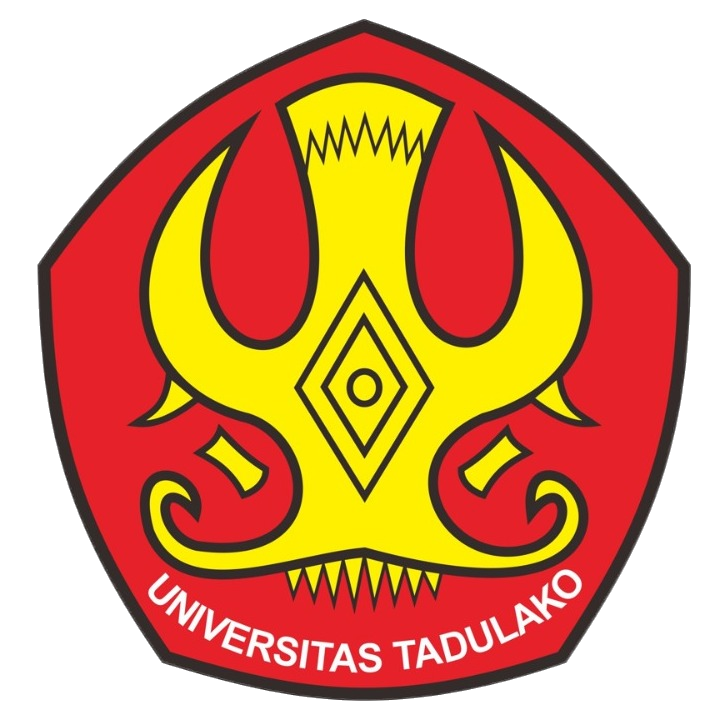COLLABORATIVE GOVERNANCE IN REALIZING ADIPURA IN PALU CITY
Keywords:
Adipura, Collaborative, GovernanceAbstract
This research aims to describe the collaboration in achieving the Adipura awards in Palu city. The research ultilizes Ansell and Gash’s theory of Collaborative Governance, which includes four indicators : initial conditions, institutional design, leadership, and the collaborative process. This study employs a qualitative approach with a descriptive research type. Data collection techniques include observation, interviews, documentation, and literature review. The research findings indicate that based on the four indicators, the collaborative governance between the City Government and Tadulako University in achieving the Adipura award in Palu City shows that the initial conditions, institutional design, snd leadership are already optimal. However, the collaborative process is not yet optimal. This is evident in the commitment and understanding of students, which are still lacking in depth. Students admit that their understanding of Adipura and related issues is still insufficient, and their commitment tends to be individual and pragmatic, without a deep understanding of the objectives and context of their work programs. Therefore, the achieve better collaboration, there needs to be an improvement in the understanding and commitment of student towards Adipura and related environmental issues
References
Agranoff, R., & McGuire, M. (2003). Collaborative public management: New strategies for local governments. Georgetown University Press.
Ansell, C., & Gash, A. (2008). Collaborative governance in theory and practice. Journal of Public Administration Research and Theory, 18(4), 543–571.
Bryson, J. M., Crosby, B. C., & Stone, M. M. (2006). The design and implementation of Cross‐Sector collaborations: Propositions from the literature. Public Administration Review, 66, 44–55.
Cahya, N. (2020). Proses Collaborative Governance Dalam Penerapan Uang Elektronik (UNIK) Di Jalan Tol Kota Makassar. Universitas Muhammadiyah Makassar.
Donahue, J. D., & Zeckhauser, R. J. (2011). Collaborative governance: Private roles for public goals in turbulent times. Princeton University Press.
Dwiyanto, A. (1995). Penilaian Kinerja Organisasi Pelayanan Publik. Yogyakarta: Fisipol UGM.
Emerson, K., & Nabatchi, T. (2015). Collaborative governance regimes. Georgetown University Press.
Head, B. W., & Alford, J. (2015). Wicked problems: Implications for public policy and management. Administration & Society, 47(6), 711–739.
Jung, Y., Mazmanian, D., & Tang, S.-Y. (2009). Collaborative governance in the United States and Korea: Cases in negotiated policymaking and service delivery. International Review of Public Administration, 13(sup1), 1–11.
Klijn, E.-H., & Koppenjan, J. F. M. (2000). Public management and policy networks: foundations of a network approach to governance. Public Management an International Journal of Research and Theory, 2(2), 135–158.
Kooiman, J. (1993). Modern governance: new government-society interactions. Modern Governance, 1–288.
Lemos, M. C., & Agrawal, A. (2006). Environmental governance. Annu. Rev. Environ. Resour., 31, 297–325.
Marsh, D., Stoker, G., & Mahadi, H. (2021). Metode Kualitatif dan Metode Kuantitatif: Seri Teori dan Metode Ilmu Politik. Nusamedia.
Miles, M. B., Huberman, A. M., & Saldaña, J. (2014). Qualitative data analysis: A methods sourcebook. 3rd. Thousand Oaks, CA: Sage.
Moleong, L. J. (2006). Metodologi Penelitian Kualitatif, the 22nd edition. Bandung: Remaja Rosdakarya.
Mulyadi, S., Basuki, A. M. H., & Prabowo, H. (2019). Metode penelitian kualitatif dan mixed method: perspektif yang terbaru untuk ilmu-ilmu sosial, kemanusiaan, dan budaya.
Nazir, M. (1988). MetodePenelitian. Jakarta: Ghalia Indonesia.
O’Leary, R., Gazley, B., McGuire, M., & Bingham, L. B. (2009). Public managers in collaboration. The Collaborative Public Manager, 1–12.
Setiawandari, N. E. P., & Kriswibowo, A. (2023). COLLABORATIVE GOVERNANCE DALAM PENGELOLAAN SAMPAH. Jurnal Kebijakan Publik, 14(2), 149–155.
Sparrow, J. (2008). New Approaches to Optimizing Child Development And Breaking the Cycle of Poverty. Brazelton Touchpoints Center.
Sugiyono, D. (2013a). Metode penelitian pendidikan pendekatan kuantitatif, kualitatif dan R&D.
Sugiyono, D. (2013b). Metode penelitian pendidikan pendekatan kuantitatif, kualitatif dan R&D.
Sumarto, S., Suryahadi, A., Arifianto, A., Sadler, K., & Akhmadi, N. (2004). Governance and poverty reduction: Evidence from newly decentralized Indonesia. Asian Development Experience Vol. 2: The Role of Governance in Asia, 27–64.
Waardenburg, M., Groenleer, M., de Jong, J., & Keijser, B. (2020). Paradoxes of collaborative governance: investigating the real-life dynamics of multi-agency collaborations using a quasi-experimental action-research approach. Public Management Review, 22(3), 386–407.
Widoyoko, E. P. (2012). Teknik penyusunan instrumen penelitian. Yogyakarta: Pustaka Pelajar, 15(1), 1–22.
Dokumen :
Peraturan Menteri Lingkungan Hidup Republik Indonesia Nomor 6 Tahun 2014




